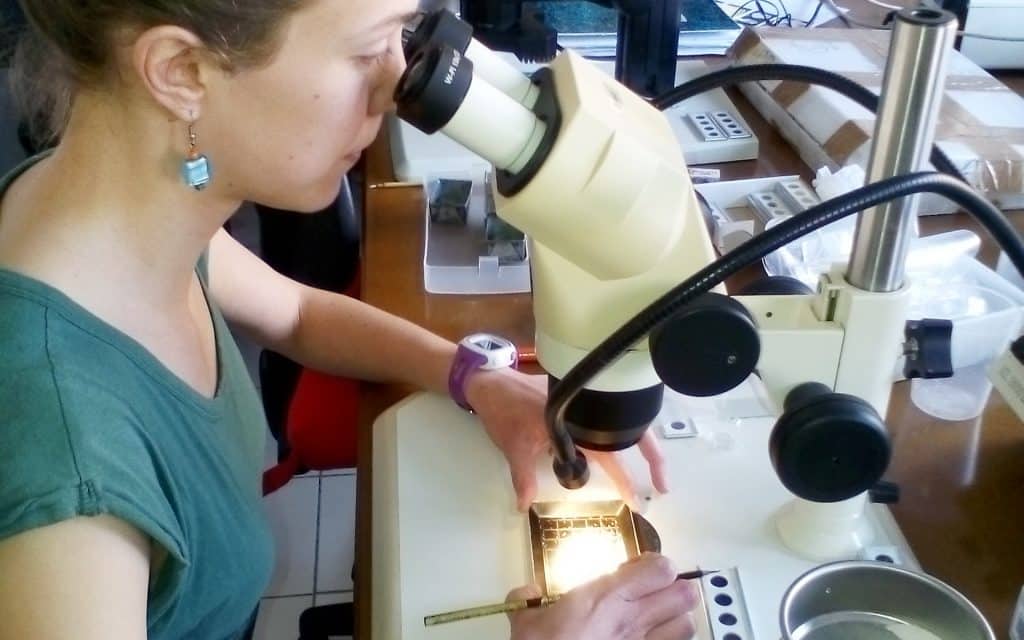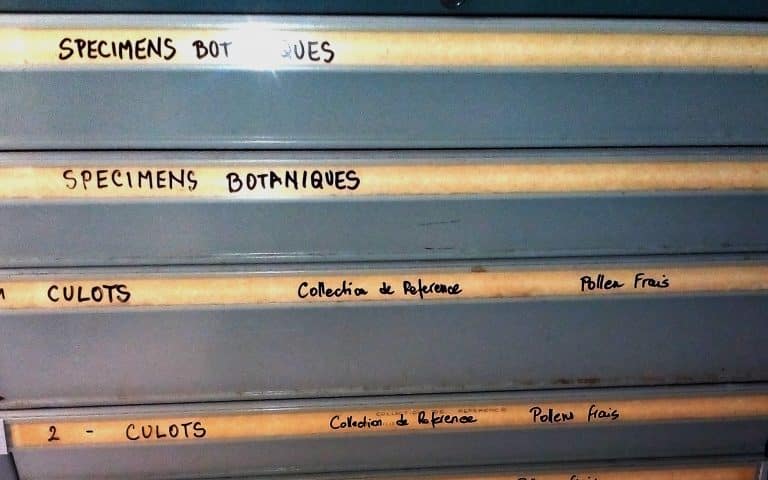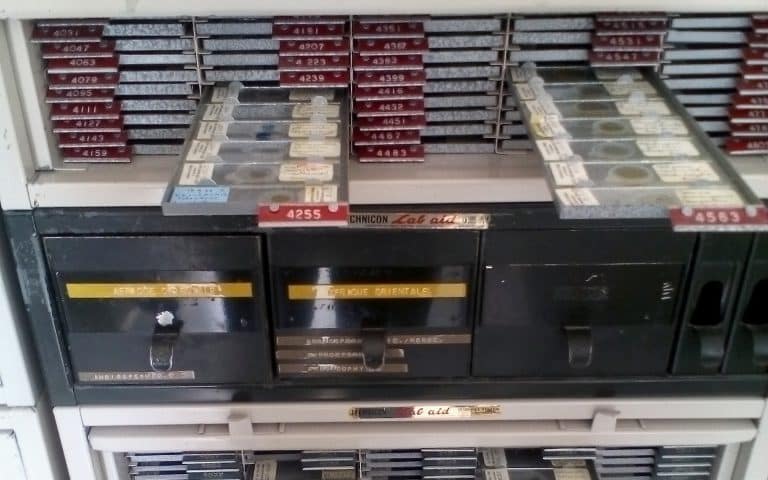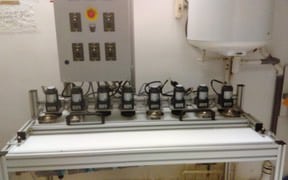LPM Laboratory Services
Bio-indicators - Simple extraction => microscopic analysis
The various bio-indicators are extracted and concentrated by :
. a series of selective chemical extractions to remove constituents that may hinder observation or analysis.
. by sieving and/or filtration.
The residue obtained after extraction is then :
. mounted between slides and lamellae (pollen, diatoms, radiolarians, phytoliths and coccoliths)
. ". hand-picked under stereomicroscope (foraminifera)
. "Automatically picked up by a robot - LINK MISO- (foraminifera)
The slides are analysed by :
. Manual microscopic analysis by a specialist (diatoms, pollen, phytoliths),
. Automated microscopic analysis (LIEN -PF Microtomate) of foraminifera, coccoliths, radiolarians.
Bio-indicators - High Purity Extraction => geochemical analysis (δ18O, δ 17O, δ13C)
Obtaining high-purity concentrates is a prerequisite for the geochemical analysis of certain bioindicators (foraminifera, coccoliths, diatoms and phytoliths). For this purpose, the chemical extraction steps are multiplied and diversified at controlled temperatures. The purity of the concentrates is checked by SEM-EDS. Analyses are carried out by (LIEN Stable Isotope Laboratory (PANISS) by ICP-AES, ICP-MS, IRMS, nanoSIMS, 14C-AMS.
Anthropogenic indicators - microplastic extraction
For M1 and M2 courses contact L.Vidal (vidal@cerege.fr)
The Modern Plant Pollen Reference Collection for Ethiopia and East Africa (7000 species)
Collection initiated by Raymonde BONNEFILLE for East Africa with the technical collaboration of Guy RIOLLET and Noëlle BUCHET, completed by Annie VINCENS for East Africa, Anne-Marie LEZINE for Senegal; Thérèse EDORH for Togo; Hilaire ELENGA for Congo at the Laboratoire de Géologie du Quaternaire but also thanks to numerous exchanges.
This collection, initiated in the 1980s, is the result of 40 years of work through field missions, plant sampling and herbarium collections. A total of 7000 species are listed and illustrated.
It consists of :
. Reference blades
. Fresh pollen pellets
. Botanical samples
To access the collection, contact C. Paillès





